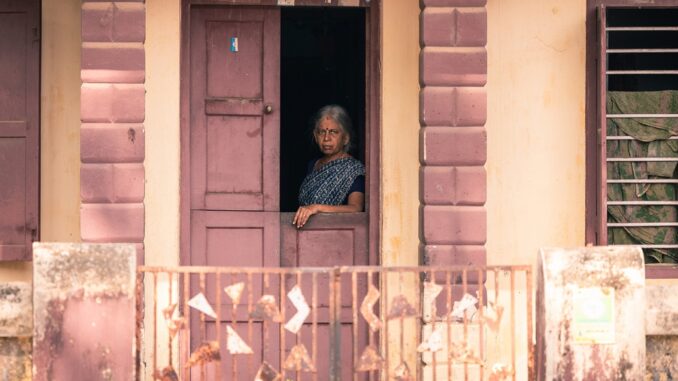
This year is the 30th anniversary of the passing of the 73rd and 74th Amendments. Indian governance was always overcentralized. But it is a sign of the times that even the modest steps these amendments took towards decentralization now seem to belong to an alien intellectual and political world. In a moment of authoritarian centralization, the idea of deepening democracy by creating structures of inclusive governance seems like a pipe dream.
Indian democracy since Independence never really had a commitment to decentralization. Despite performative obeisance to the idea by the state, decentralization has always been hostage to a number of contradictory impulses. Initially, there was the presumption that centralized power would be required to break the power of local elites, never mind the fact that there is little evidence that the outcomes of decentralization would have been worse than what we eventually got. The existing tiers of government, both central and state, wanted to hoard most of the resources. India has the lowest spending on local government as a proportion of resources. And the ideology of Gandhian decentralization, oddly enough, militated against genuine political decentralization.
For, in this imagination, decentralization was not a devolution of power and resources. It was the creation of an idealistic imagined space that would be above politics; that would free it from the usual give and take and contests of politics. Local government would be held to a higher standard than other tiers of governance. For example, we take partisanship and competition to be central to politics elsewhere. But somehow we expected panchayats to be this font of consensus (some states give incentives for election by consensus). And, it has to be said, there was no serious demand side push for decentralization.
The 73rd and 74th amendments did achieve a lot. In some areas, they led to the state acquiring a distinct presence on the ground; they gave millions of citizens identities as representatives; they provided a conduit for sharing power; they created deliberative spaces, led to the creation of new norms, especially around the participation of women and a churn in local elites. They slowly built up local capacities, and led to a wide range of functions being devolved to local government.
Local government was often the object of condescension: The general story we ran was that the state at lower tiers of government is incompetent, while you get a better state at the higher level. It is often the reverse: The state at local levels is competent, it is just constantly being let down by lack of support and investment from the top. Fiscal resources that local governments managed went up considerably, in part paradoxically through central schemes like NREGA, and increased finance commission awards. In some, the very pathologies associated with local elections were also a tribute to its success. The fact that local political competition became intense in many states, and in some cases, political spending in local elections acquired obscene proportions, was a backhanded tribute to the stakes in local governance.
The experience of local governments varies across states; it is more deeply practiced and institutionalized in states like Kerala. But, as articles in a recent symposium on decentralization in the March issue of Seminar magazine point out, the glass of decentralization still remains at best half full. The tension between thinking of local government as mere administrative conduits versus autonomous political actors, the constraints placed on them by a combination of bureaucratic control and deliberate underinvestment in capacity, and the lack of political pathways for successful panchayat performers to rise in their parties, limit their salience.
Technology has been a double-edged sword. On the one hand, it can create local capacity; on the other, it has been used to largely bypass political negotiation and control. The lack of clarity over municipal governance, and the hijacking of cities by the political economy of contracting, makes the idea of cities being governed by some sort of collective deliberation a bit of a joke.
Local government requires many technical, administrative and financial fixes. There is a case to be made that the distinction between the 73rd and 74th amendments is now obsolete. Jayalalithaa, when she was chief minister, had first made the case for a unified district-level local government rather than a distinction between urban and rural. Many of the decisions consequential for India’s urbanization, like land use change, for example, are being made in “panchayats”; there is arbitrage over how a settlement gets classified, and rural and urban is now, at best, a continuum. There are many such discussions to be had. For years, so many colleagues at the Centre for Policy Research were engaged with these matters. But these issues now seem to belong to another time, even another country.
Proponents of decentralization now have to contend with three large uncomfortable facts. The first is that despite significant changes brought about by the 73rd and 74th amendments, has the needle on the demand side of decentralization moved much? Which is the constituency or movement that will put its weight behind local governance? Or will any incremental reforms we get remain, like in 1993, a product of accidental conjunctures, easily blown away with the first whiff of resistance. And oddly enough, even in cases where local governments have the power, are they willing to exercise it?
Secondly, the guiding philosophy behind decentralization was a faith in institutions. These were meant to be the pathways to inclusive growth and active citizenship. You cannot have inclusive growth without inclusive governance, so went the mantra. It was part of a range of reforms that sought to redesign the architecture of the Indian state. The state would be better served by decentralization than centralization, transparency instead of opacity (hence the RTI Act), public reason instead of administrative discretion (hence independent regulators), local capacity instead of concentrated authority, active participation instead of subject status. This faith placed in the power of institutions seems naïve at this historical juncture; institutions cannot withstand concerted social and ideological forces.
Finally, as the 30th anniversary celebrations roll out, we will all tick off the world beating achievements of these amendments: The largest number of elected representatives, the biggest political affirmative action program, the largest number of village assemblies and so forth. These achievements are real.
But this talk will reveal much about our attitudes to democracy: We like the idea, we are exhilarated by it, but we will do the best we can to ensure that democracy becomes more and more a performance. The non-seriousness about the 73rd and 74th amendments is a lack of seriousness about democracy itself.
This opinion piece (“Pratap Bhanu Mehta writes: Nobody loves local government“) first appeared in the Indian Express on March 11, 2023. The author, Pratap Bhanu Mehta, is a Contributing Editor at the Indian Express. He has been vice-chancellor of Ashoka University and president, Centre Policy Research. Before he started engaging with contemporary affairs, he taught political theory at Harvard, and briefly at JNU.



